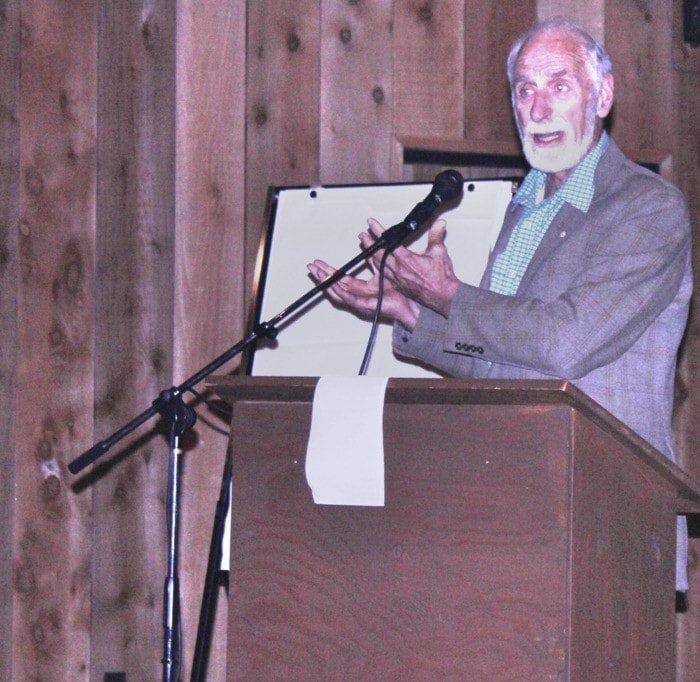Ducking a dry Cowichan River and another fish kill next fall could rest with regional directors and Crofton pulp-mill brass applying for a new provincial water-storage licence.
“We’re willing to work with all stakeholders to avoid a repeat of what happened this year,” said mill manager Rob Belanger after Thursday’s politely tense meeting in Duncan.
Crofton mill holds licences for river-water storage and extraction to supply its operations.
More storage of spring run-off behind Cowichan Lake’s 1957 weir — to prevent summer low-flow woes and dead salmon — needs a provincial licence.
Rob Hutchins, Cowichan Valley Regional District chairman, indicated if Victoria won’t act to save the heritage river, the CVRD board would seek that licence.
“Its the (forest and lands) minister’s responsibility, but if they fail (to act on storage), yes we will (apply for a licence).”
Thursday’s meeting drew about 150 citizens, government, Natives and business leaders to the Quw’utsun’ Cultural Centre where opinions and ideas were aired about why spring water-storage didn’t happen in Cowichan Lake to slake a drought-crippled river this fall.
Most anger about a dry river, that killed 1,000 spawning chinook, was vented on Brian Symonds, Ministry of Forests and Lands’ water-stewardship director.
“Step up, take on the licence, and do the job,” said Gerald Thom, Cowichan Lake and River Stewardship Society’s president.
Symonds insisted due process be followed to gain broad community input, plus a formal licence re-application.
“We’re reluctant to issue it to ourselves. We need to go through the process and look at (storage) impacts,” he said of the lake’s 800-odd properties that may be affected.
But David Anderson, former federal environment minister, explained B.C.’s legislation basically allows Symonds’ boss, minister Steve Thomson, to boost emergency lake water-storage.
“He’s got the authority now,” stressed the Cowichan Watershed Board member, angry Thomson appears to have ignored valley leaders’ May pleas to store water, and head-off a dry river in late summer.
“We need the minister to recognize his responsibility and do the job.
“The buck has to stop somewhere. It has to stop with the minister . . . acting on the Cowichan,” Anderson said.
That means bending the strict-flow ‘rule curve’ to higher-volume ‘rule band’ levels, explained a chart-wielding Larry Barr, regional water manager.
The rule band would lift lake levels by about eight inches, he noted.
Symonds couldn’t be pried from process.
“Unless someone comes to us with an application, we’re not going to unilaterally change things,” he said. “We want consensus before changes.
“There’s no magic, secret formula but it must be a broad (community) engagement for a change to the rule curve.”
With all sides seemingly present, local Paul Rickard demanded, “What on Earth is your definition of broad-based community support?”
Noted Thom: “Bureaucrats are ducking the questions.”
The parched river bed saw 1,000 chinook die after failing to reach upstream spawning grounds, while First Nations’ fishermen were angry their traditional food fish foundered.
“We understand we don’t have the water. We’re not pointing fingers,” said filmmaker Harold C. Joe, disappointed Cowichan Tribes’ Chief Harvey Alphonse missed the meeting.
“If our chief was here we’d have accountability. We want a sit-down with the fishermen.”
Hutchins and valley mayors sat with Thomson in the spring, and requested the flexible (band) rule be used.
“We were told to apply for a licence. That takes 10 to 18 months. It wouldn’t have helped us this year,” said Hutchins.
—Cowichan News Leader
Pictorial
